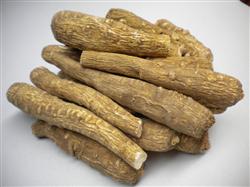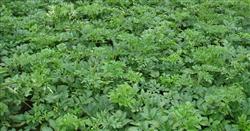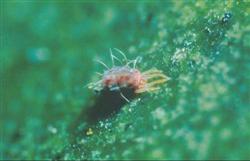How to grow Chinese herbal medicine Angelica dahurica?

How to grow Chinese herbal medicine Angelica dahurica? What are the environmental requirements of Angelica dahurica? please introduce the cultivation techniques of Angelica dahurica: 1. the biological characteristics of Angelica dahurica dahuricae dahur 1. According to the experimental study on the requirement of light, it was found that light could promote the germination of Angelica dahurica seeds; sufficient light made the aboveground growth exuberant, and then the underground main root was thick and long. The plant of Angelica dahurica growing in shade is shorter, the leaf surface coefficient is small, and the main root is not thick. two。 Angelica dahurica Under the condition of variable temperature, the germination rate of seeds decreased obviously at constant temperature. The best temperature range of seed germination is 10 ~ 25 ℃, and the seedlings can tolerate the low temperature of 6 ℃ ~ 8 ℃ in winter. In the area to the north of the Yellow River, the aboveground part withered in winter and overwintered with persistent roots, while in the south of the Yangtze River, the aboveground part could still survive in winter, but grew slowly, and sometimes the leaf yellow wilt appeared in the hot summer. 3. The requirement of moisture is the degree of soil moisture, which is afraid of both drought and stagnant water. After sowing, water shortage will affect seedling emergence, drought in seedling stage is easy to cause seedling shortage, freezing injury is easy to occur in low temperature in winter, more water is needed in vegetative growth period, and rotting roots are easy to occur if there is too much water in the middle and later stage of growth, but the root is prone to Lignification and affect the quality of medicinal materials. 4. The requirement for soil is that sandy soil, black sandy soil or alluvial loam with deep soil layer and loose soil is better than clayey or consolidated soil, which can easily lead to short and bifurcated main roots and affect the yield and quality. 5. Angelica dahurica The second year is the vegetative growth period, the plant grows most vigorously from April to May, and the root grows fastest from late April to June. After the middle of July, the plant gradually turns yellow and withered, and all the nutrients in the aboveground part have been transferred to the underground root. Into a short dormancy (this is the best time for harvesting medicinal materials). When the weather turned cool in late August, the plant gave birth to new leaves, continued to enter the reproductive growth period of the third year, began to bolt in late April, bloomed one after another from mid-May to early June, and the seeds matured in turn from late June to mid-July. Because flowering and seeding consumes a lot of nutrients, the roots of the remaining plants often become woody and even rot, so they can not be used as medicine. The germination rate of mature seeds is 70%-80% in the autumn of that year, and the germination rate of seeds is very low in the next year, even without germination. Planting Angelica dahurica dahur two。 Angelica dahurica After the previous crop harvest, 2500-5000 kg of rotten compost or barnyard manure per mu, 100 kg of cake fertilizer and 50 kg of phosphate fertilizer can be used as base fertilizer, and less fertilizer can be applied in fertile land. After application, ploughing should be carried out at a depth of more than 1 foot. After turning, the soil should be fully weathered, and then ploughed again. Because the root of Angelica dahurica grows deeply, so when preparing the soil, it is necessary to plough the fine rake deeply and make the fertility of the upper and lower soil layer uniform, so as to prevent more roots because the topsoil is too fat, which affects the yield and quality. After leveling and raking fine, the border is 15-20 cm high and 1-2 m wide. The border surface should be flat to facilitate irrigation and drainage, and the topsoil should be flat and fine to facilitate the emergence of seedlings. The third section of the propagation method of Angelica dahurica da First, the sowing time production has strict requirements on the sowing date, and timely sowing is one of the important links to obtain high yield. If the seedlings are sown prematurely, the seedlings will grow too well before winter, and in the second year, some plants will bolt and blossom ahead of time, and the roots will become lignified or rotten, which can not be used as medicine, thus affecting the yield. If the temperature is too late, the temperature will drop, which will affect the germination and emergence of seedlings, and the seedlings are vulnerable to freezing injury, poor seedling growth and low yield. Due to the low germination rate of seeds in the next year and the high germination rate of fresh seeds, it is necessary to choose the fresh seeds harvested in the same year to sow, generally mainly in autumn, low yield and poor quality in spring sowing. The suitable sowing date varies with climate and soil fertility. Late sowing with high temperature, on the contrary, early sowing, suitable late sowing for fertile soil, and earlier sowing on the contrary. According to local customs, autumn sowing in Henan is before and after White Dew, Hebei between the End of Heat and White Dew, Sichuan between Bailu and autumnal equinox, Zhejiang 10 days before Cold Dew, and the Autumn Equinox to Cold Dew in higher temperature areas. Spring sowing takes place from March to April. Second, the sowing methods of strip sowing, hole sowing and spreading sowing can be used, and the most common sowing methods are strip sowing. 1. Strip sowing method is mostly used in Zhejiang, Henan and Hebei, with a row spacing of 25 cm and a shallow trench (about 4 cm deep). The seeds are evenly sowed into the ditch and covered with a thin layer of fine soil, with a seed consumption of 1 kg / mu. two。 Hole sowing method: it is widely used in Sichuan. According to the row spacing of 30 cm, the hole spacing of 23 cm and 27 cm, the bottom of the hole should be flat, sowing 10 seeds per hole, 0.5-0.8 kg per mu. 3. Sowing method: Zhejiang uses this method to spread seeds evenly on the raked surface of the border, and then cover it with a thin layer of soil and straw. But this method is seldom used at present. Before sowing, the seeds can be soaked in warm water overnight or mixed with sand and seeds in a wet pile for 1-2 days before sowing. It is also reported that 2% potassium dihydrogen phosphate aqueous solution is sprayed on the seeds and sowed for 8 hours after stirring, so that the solution is fully absorbed by the seeds before sowing, which can promote the early emergence of seedlings, and the emergence rate is high. Generally speaking, seedlings can emerge 15-20 days after sowing, and it is also reported that plastic film mulching can be used to make the seedling stage about 10 days earlier than that of the control group, and the emergence rate is 4% higher than that of the control group, but if sowing is carried out at a suitable sowing time, and there is no obvious abnormal bad weather, it is generally not necessary to cover the plastic film. After sowing, it is generally covered with a thin layer of fine soil, slightly suppressed, so that the seeds are in close contact with the soil, and then evenly spread out about 1000 kg of rotten manure fertilizer; some do not cover the soil after sowing, and then apply about 1000 kg of human and animal dung water per mu, then cover it with plant ash mixed with human and animal dung water, do not expose seeds, and then suppress or tread lightly with wooden boards to facilitate germination. Section IV Field Management of Angelica dahurica 1. The seedlings of Angelica dahurica Strip sowing leaves one plant every 5 cm, hole sowing leaves 5 trees per hole, and the second seedling leaves 1 plant every 10 cm or 3 plants per hole. Before and after the Qingming Festival, when the seedling height is about 15 cm, the plant spacing is 13-15 cm or 3 plants are left in each hole, which are staggered in a triangle to facilitate ventilation and light transmission. When fixing the seedlings, the large seedlings with overgrown growth and bluish-white petioles should be pulled out to prevent early bolting and flowering. The times of inter-seedling can be taken 1-3 times according to the specific situation. two。 Weeding in the middle tillage should be carried out at the same time with inter-seedling and fixed seedling. Weeding can be done by hand or shallow hoe before fixing seedlings, and weeding can be done while weeding, loosening the soil, fixing seedlings, and then gradually deepening, depending on the degree of dryness and wetness of the soil and the growth of weeds, be careful not to hurt the main root when loosening the soil, otherwise it is susceptible to disease. When the leaves grow up and the ridges on the border are closed, there is no need to weed. 3. Angelica dahurica The vegetative growth begins to flourish after spring, and it can be fertilized for 3 or 4 times. The first and second times were carried out after inter-seedling and intertillage, and the third and fourth times were carried out after seedling setting and before ridge closure. Fertilizer application should be carried out on a sunny day, and it is not suitable to apply fertilizer on the day after rain or weeding. Fertilizer types can choose human feces and urine, rotten cake fertilizer, ring fertilizer, urea and so on. When applying fertilizer for the first time, the fertilizer should be thin and less, such as 10 piculs of rare human and animal manure per mu, and then it can be thickened and increased gradually, such as 30-40 piculs. One time before the ridge closure can be combined with the application of phosphorus and potassium fertilizer, such as calcium superphosphate 20 to 25 kilograms, to promote the root stout. It has been reported that 25 kg of calcium magnesium phosphate fertilizer and 5 kg of potassium chloride are applied in a topdressing before ridge sealing, and the soil is cultivated immediately after application, which can prevent lodging and promote growth. The number of times of topdressing and the amount of fertilizer applied each time can also be determined according to the growth of the plant. If the leaf color of the plant is not very exuberant when the ridge is about to be closed, you can topdressing again, or at this time the leaf color is thick green and the growth is exuberant, but no more topdressing. 4. Angelica dahurica After sowing, if the soil is dry, it should be watered immediately, and in the future, if there is no rain, it should be watered every few days to keep the border surface moist before the seedlings are unearthed, so as to facilitate seedling emergence; the soil should also be kept moist at the seedling stage to prevent the emergence of yellow leaves and produce more lateral roots. Seedlings should be watered thoroughly before overwintering. Henan has the experience of "wet freezing is best, but dry freezing is not easy to live". Hebei has the experience of "Angelica dahurica After the spring of the following year, it can be irrigated with topdressing, especially in summer days. If there is stagnant water in the field in the rainy season, ditches should be opened in time to prevent stagnant water from rotting roots and diseases. 5. In May of the following year, some plants will bolt and blossom after sowing, their roots can not be used for medicinal purposes, and their seeds can not be used for seed, because the next generation will bolt ahead of time. Therefore, in order to reduce the consumption of nutrients in the field, the plants found to be bolting should be pulled out in time. Attachment: measures to prevent early bolting of Angelica dahurica According to the traditional cultivation experience and some scientific experiments in the producing area, the following measures can be taken to reduce the bolting rate to 3% to 5%, with an average income of about 50 kg per mu. 1. Reasonable pruning and breeding of improved varieties are essential to prevent early bolting of Angelica dahurica. The characteristics of seeds from different parts of the same plant are different. The seeds of flower moss at the top of the main stem are larger and the bolting rate is the highest; the seeds on the second and third branches are shrunken and small, the quality is poor, and the bolting rate is not high, but the seedling emergence rate and seedling rate after sowing are low; the seed quality of the primary branch is the best, the seedling emergence rate and seedling rate are the highest, and the bolting rate is also low; the over-mature seeds are also easy to bolt and blossom in advance. Therefore, in the flowering stage of the remaining plant, the following pruning methods should be adopted: cut off the inflorescence on the main stem and secondary and tertiary branches, and retain the inflorescence on the primary branch. Thus, the nutrition supply of primary branch inflorescence is ensured, the development of seed embryo is consistent, and the individual difference of seed is reduced. In this way, after sowing, the bud is neat, easy to manage, and the plant also has excellent characters. Click to get more planting techniques of Angelica dahurica
- Prev

Planting techniques of traditional Chinese Medicine Angelica dahurica
Introduction to the planting techniques of traditional Chinese medicine Angelica dahurica: (1) the selection and preparation of Angelica dahurica should be cultivated in flat land. It is better to have a deep, loose and fertile sandy loam. The previous crop is generally rice, corn, sorghum, cotton and so on. After the previous crop harvest, apply rotten compost per mu, or barnyard manure 3000, 000 kg, phosphate fertilizer 5.
- Next

What are the insect pests in planting Angelica dahurica?
What are the insect pests in planting Angelica dahurica? How to prevent and cure it? Please guide Angelica dahurica mainly include peach aphid, carrot microtube aphid, Sapporo two-tailed aphid, red-striped bug, yellow Phoenix butterfly, yellow-winged fennel borer, sweet potato night moth, small blue and white golden turtle, Japanese golden turtle, red spider. Peach aphid, carrot microtube aphid, Sapporo two-tailed aphid, red stripe bugs control.
Related
- Fuxing push coffee new agricultural production and marketing class: lack of small-scale processing plants
- Jujube rice field leisure farm deep ploughing Yilan for five years to create a space for organic food and play
- Nongyu Farm-A trial of organic papaya for brave women with advanced technology
- Four points for attention in the prevention and control of diseases and insect pests of edible fungi
- How to add nutrient solution to Edible Fungi
- Is there any good way to control edible fungus mites?
- Open Inoculation Technology of Edible Fungi
- Is there any clever way to use fertilizer for edible fungus in winter?
- What agents are used to kill the pathogens of edible fungi in the mushroom shed?
- Rapid drying of Edible Fungi

